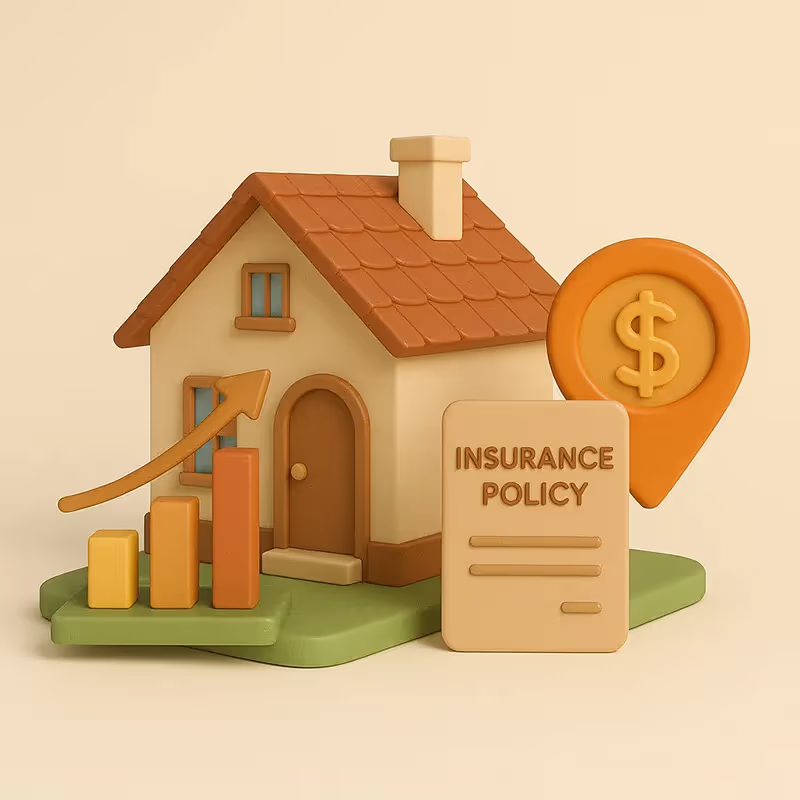How a Home’s Age Affects Your Florida Insurance Rate & Ways to Reduce Premiums

In Florida, older homes often come with higher insurance premiums due to increased risks like outdated plumbing, aging roofs, and weaker storm resistance. Homes built after modern building codes (especially post-1992) may qualify for wind mitigation discounts, potentially lowering costs.
Renovations can help reduce premiums if they improve safety, but certain upgrades like luxury remodels or added square footage might raise them.
Your home’s age isn’t just a number. It’s something your insurance company pays close attention to. In Florida, it can shift your premium quite a bit.
Sometimes more than you’d expect. Older homes can carry more risk, newer ones may come with discounts. But it's not always that simple.
Let’s take a closer look at how age plays into your pricing, and what you can actually do about it.
Older homes can mean higher premiums
If your house is over 20 years old, insurers start to raise eyebrows. And premiums.
Why? It’s mostly about risk. Older homes tend to have more issues hiding beneath the surface.
Some common concerns:
- Outdated plumbing: older pipes are more likely to burst or leak
- Worn-out roofs: many insurers flag roofs older than 15 years
- Electrical systems: older wiring can pose fire risks
- Weaker wind resistance: homes built before modern hurricane codes may not hold up well
You might not notice these things day to day. But insurers calculate the cost of replacing everything, and older systems drive those costs up.
But newer isn’t always cheaper
It’s easy to assume newer equals cheaper. That’s not always the case.
Some newer homes are built with low-cost materials or sit in high-risk flood zones. Others have solar panels or smart systems that can raise replacement costs, even if they lower your energy bill.
A brand-new home in a coastal area may still cost more to insure than a 30-year-old house inland with solid upgrades.
It depends on how it’s built, where it’s located, and what protections it already has.
Renovations can help (or hurt)
Upgrades can lower your premium. Or they can bump it up, depending on what you’ve done.
Here’s what usually helps:
- Replacing the roof (especially with wind-rated materials)
- Updating electrical and plumbing systems
- Installing hurricane shutters or impact windows
And here’s what might backfire:
- Adding square footage (raises rebuild cost)
- High-end kitchen remodels
- Swimming pools or outdoor kitchens
You don’t need to avoid upgrades. Just be realistic about how they affect insurance. It’s often about balance: adding value without adding too much risk or cost.
Florida’s building codes make a difference
Florida’s building codes changed a lot after Hurricane Andrew in 1992. Homes built after that are usually more hurricane-resistant.
That means:
- Newer homes may get wind mitigation discounts
- Older homes might not qualify without retrofits
- Insurers may require inspections for homes built before 2002
Even if your home is older, you can still improve its risk profile. You might qualify for discounts by showing your home meets certain standards (like using hurricane straps or secondary water resistance under the roof).
Want to know if your home qualifies for a better rate? You can check your quote here with no pressure. Just a simple way to compare.
What to check if your rates are high
If your home is aging and your premium keeps climbing, don’t panic. Ask your insurer (or broker) for a breakdown. Sometimes small updates or inspections can help reduce the cost.
Start by checking:
- Roof age – if it’s over 15 years, replacing it might save you money
- Wind mitigation report – this inspection can unlock big discounts
- 4-point inspection – required for older homes, and can help flag what to fix
- Flood zone status – use FEMA’s flood maps to double-check
Don’t just accept the rate you’re given. Many homeowners leave money on the table by not exploring updates or re-shopping their policy.
If you’re not sure where to start, try our free quote tool to compare carriers who specialize in Florida homes.
Quick pros and cons by home age
Homes over 30 years:
- Pros: May be fully paid off, often built with solid materials
- Cons: Higher risk for claims, may need major upgrades
Homes 10–30 years old:
- Pros: Often updated, sometimes qualify for wind discounts
- Cons: Might still need roof or system replacements soon
Homes under 10 years:
- Pros: Often lowest premiums, newer building codes
- Cons: Higher rebuild costs, expensive finishes can raise coverage limits
Your home’s story matters
Insurance pricing isn’t just about how old your home is. It’s about what you’ve done with it—and what shape it’s in now.
Florida insurers look at many moving parts. But age is still one of the biggest signals they use.
If you’re curious whether your home's age is helping or hurting your rate, it’s worth checking. You can get a fast quote from Worth Insurance and see if your current coverage still makes sense.
Because even if your home’s gotten older… your policy doesn’t have to.
To see how Worth can reduce your risk.
Get a Free Quote

















.%20Florida%20Home%20Insurance.%20.avif)



